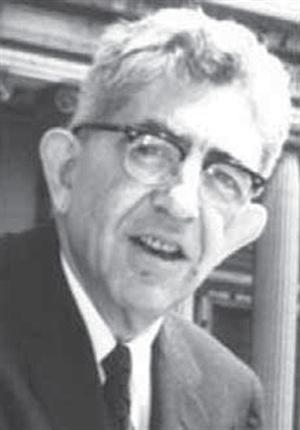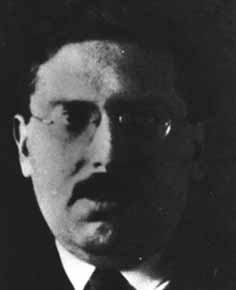<Back to Index>
- Philosopher Ernest Nagel, 1901
- Philosopher Friedrich Waismann, 1896
PAGE SPONSOR

Ernest Nagel (November 16, 1901 – September 20, 1985) was a Czech - American philosopher of science. Along with Rudolf Carnap, Hans Reichenbach, and Carl Hempel, he is sometimes seen as one of the major figures of the logical positivist movement.
Nagel was born in Nové Mesto nad Váhom (now in Slovakia, then Vágújhely and part of the Austro - Hungarian Empire). His mother, Frida Weiss, was from the nearby town of Vrbove (or Verbo). He emigrated to the United States at the age of 10 with his family, and became a U.S. citizen in 1919. He received a BSc from the City College of New York in 1923, and earned his Ph.D. from Columbia University in 1931, with a dissertation on the concept of measurement. Except for one year (1966 - 1967) at Rockefeller University, he spent his entire academic career at Columbia, becoming a University Professor in 1967 until his retirement in 1970, after which he continued to teach. He was elected to the National Academy of Sciences in 1977.
His work concerned the philosophy of mathematical fields such as geometry and probability, quantum mechanics, and the status of reductive and inductive theories of science. His 1961 masterpiece, The Structure of Science, practically inaugurated the field of analytic philosophy of science. He expounded the different kinds of explanation in different fields, and was skeptical about attempts to unify the nature of scientific laws or explanations. He was the first to propose that by positing analytic equivalencies (or "bridge laws") between the terms of different sciences, one could eliminate all ontological commitments except those required by the most basic science. He also upheld the view that social sciences are scientific, and should adopt the same standards as natural sciences.
Nagel wrote An Introduction to Logic and the Scientific Method with Morris Raphael Cohen, his CCNY teacher in 1934. In 1958, he published with James R. Newman Gödel's proof, a short book explicating Gödel's incompleteness theorems to those not well trained in mathematical logic. He edited the Journal of Philosophy (1939 – 1956) and the Journal of Symbolic Logic (1940 - 1946).
He died in New York. He had two sons, Alexander Nagel (professor of mathematics at the University of Wisconsin) and Sidney Nagel (professor of physics at the University of Chicago).

Friedrich Waismann (21 March 1896 – 4 November 1959) was an Austrian mathematician, physicist and philosopher. He is best known for being a member of the Vienna Circle and one of the key theorists in logical positivism.
Born in Vienna, Waismann was educated in mathematics and physics at the University of Vienna. In 1922, he began to study philosophy under the tutelage of Moritz Schlick, the founder of the Vienna Circle. He emigrated to the United Kingdom in 1938. He was a reader in philosophy of science at the University of Cambridge from 1937 to 1939, and lecturer in philosophy of mathematics at the University of Oxford from 1939 until his death.
Intermittently, from 1927 until 1936, Waismann had extensive conversations with Ludwig Wittgenstein about topics in philosophy of mathematics and philosophy of language. These conversations, recorded by Waismann, were published in Ludwig Wittgenstein and the Vienna Circle (1979). Other members of the Circle (including Schlick, Rudolf Carnap, and Herbert Feigl) also spoke with Wittgenstein, but not to Waismann's extent.
At one point in 1934, Wittgenstein and Waismann considered collaborating on a book, but these plans fell through after their philosophical differences became apparent.
Waismann later accused Wittgenstein of obscurantism because of what he considered to be his betrayal of the project of logical positivism and empirically - based explanation. Ultimately the texts for the project, written or just transcribed by Waismann, have been published by Gordon Baker in 2003.
In Introduction to Mathematical Thinking: The Formation of Concepts in Modern Mathematics (1936), Waismann argued that mathematical truths are true by convention rather than being necessarily (or verifiably) true. His collected lectures, The Principles of Linguistic Philosophy (1965) and How I See Philosophy (1968, ed. R. Harré), a collection of papers, were published posthumously.
Waismann's concept of open texture, or porosity, has been very influential in legal philosophy through the writings of H.L.A Hart (Hart's The Concept of Law about Rule Skepticism and Waismann's article "Verifiability".)